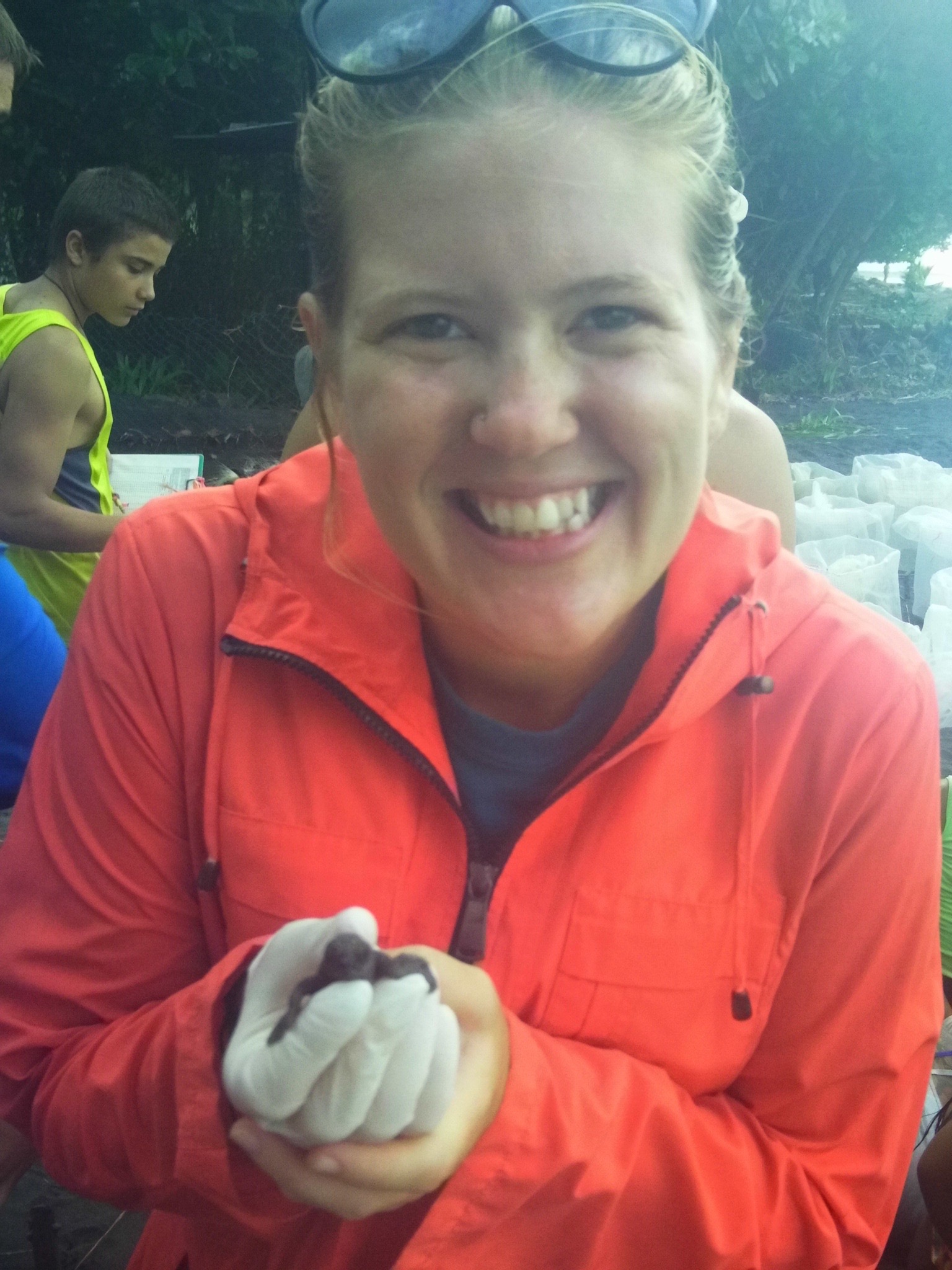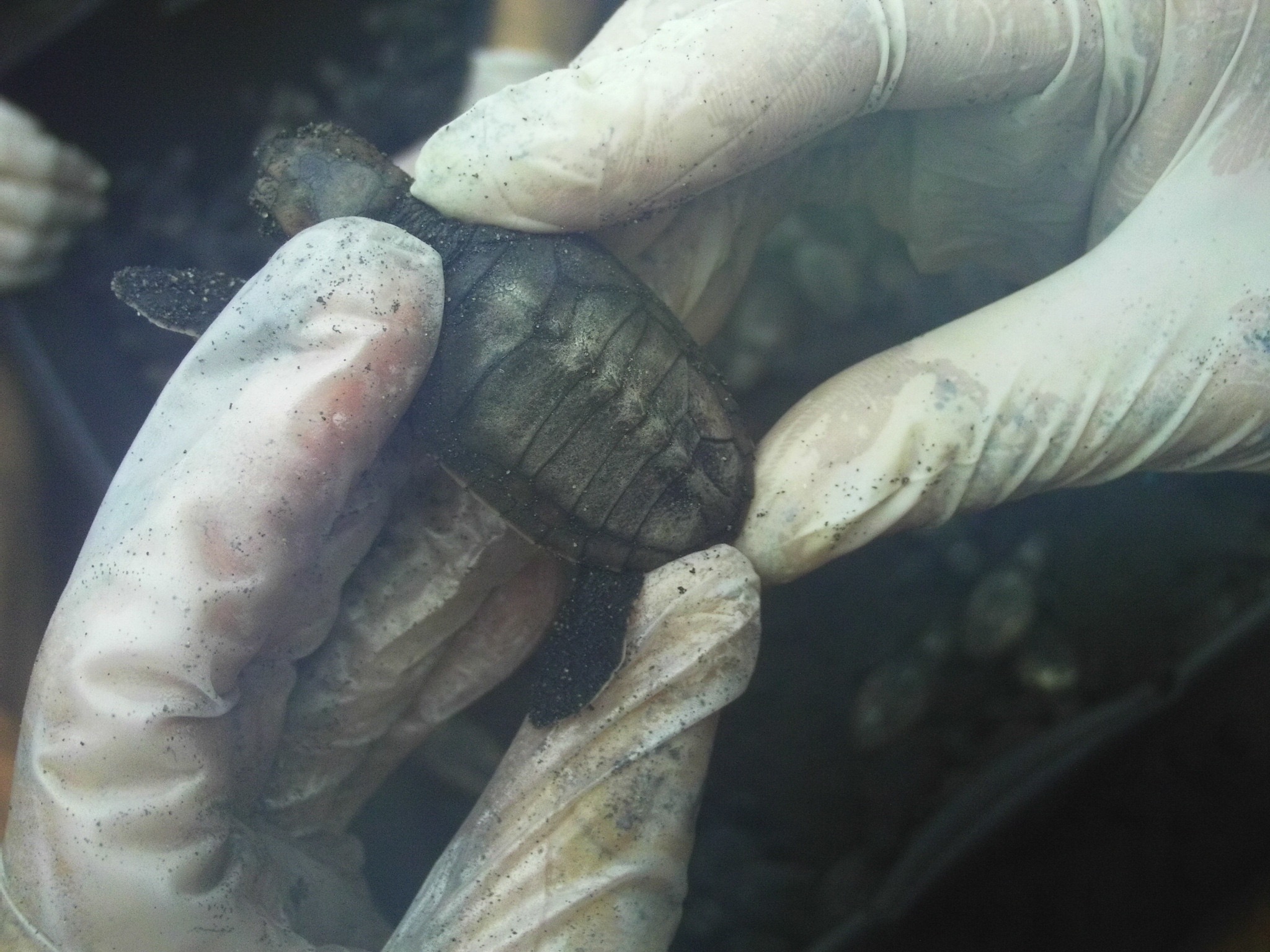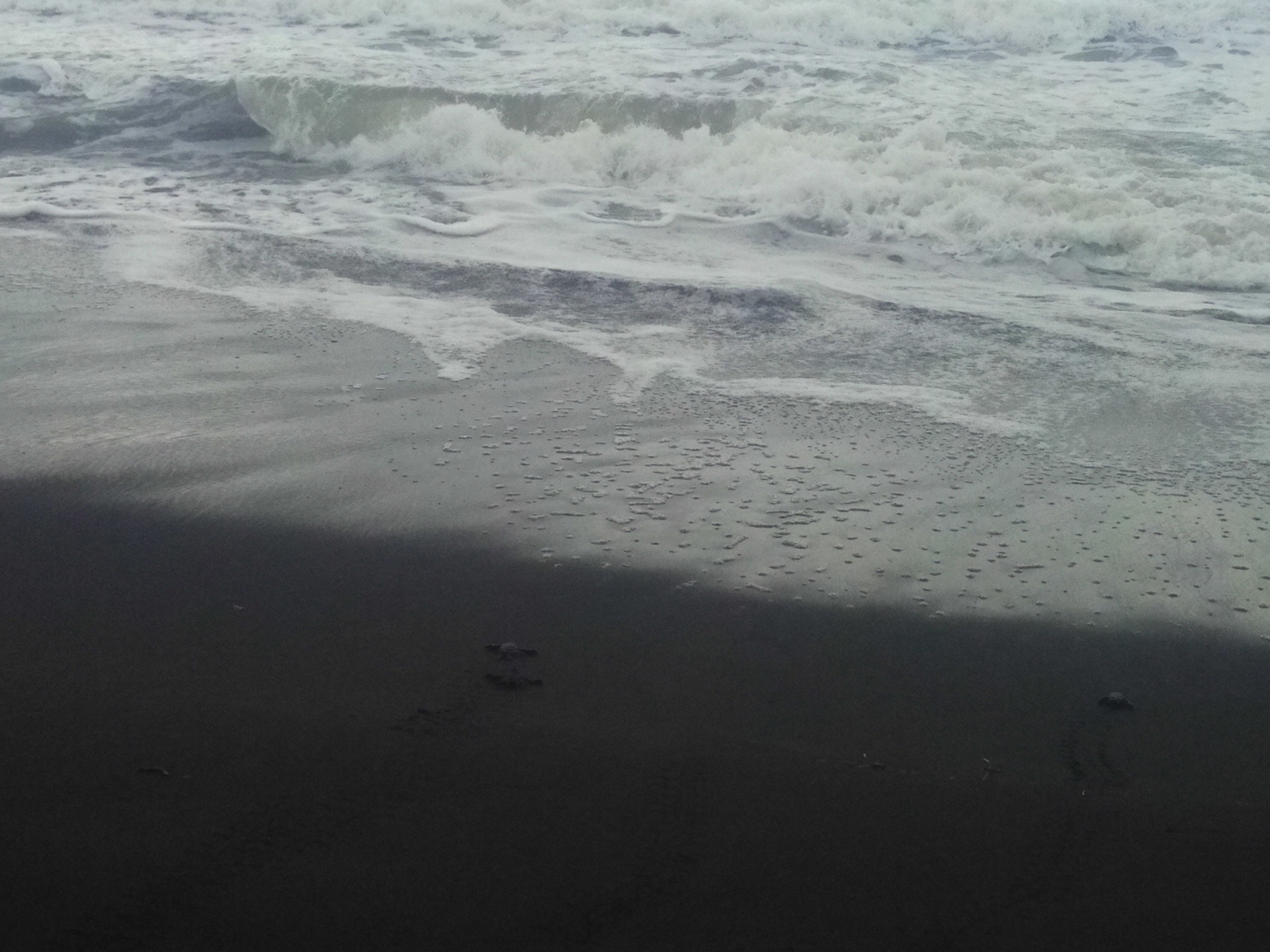For two weeks in early July, Rachel Miller, Research Assistant for the Sea Turtle Research and Conservation Program, headed to Costa Rica to lead a marine biology summer camp. This camp was comprised of 8 high school students from all over the United States who came to Costa Rica to learn more about worldwide sea turtle conservation initiatives and to help better the community.
The camp worked in conjunction with WIDECAST – Pacuare, a conservation program located on the Caribbean coast of Costa Rica. Here, Rachel and the campers had the opportunity to assist with hatchery construction, night walks, and hatchling releases. Even though it is illegal, poaching is a major issue in Costa Rica, especially in poorer communities. These communities have subsisted on the consumption and sale of turtle eggs and meat for decades. However, WIDECAST – Pacuare is working to combat poaching through the use of night walks (led by former poachers, used as an alternative source of income), a guarded hatchery (used to monitor relocated nests and protect the eggs from predators and poachers), and education initiatives (public hatchling releases, lectures, and social media).
During their time in Pacuare, Rachel and the campers got to see leatherback hatchlings make their way into the sea and on the last day, they were rewarded with a hawksbill hatching! It is common for leatherbacks to nest on the Caribbean coast of Costa Rica from February until the end of June and the babies begin to hatch in May until the end of July. Hawksbill sea turtles, however, nest less frequently, and there were only two hawksbill nests in the hatchery during the time the camp was taking place. Not only was the hawksbill hatching special in and of itself, but the nest consisted of 9 hybrid hatchlings– these babies were the result of a successful mating between a hawksbill and a Kemp’s Ridley. Unlike most hybrids, the offspring of a hawksbill and Kemp’s Ridley are thought to be fertile and it is believed that this is the fourth generation of these hybrids. The reason that all 120 hatchlings were not hybrids is because many sea turtle nests have multiple paternities, resulting in typical hawksbill hatchlings and hybrid hatchlings.
Rachel and the campers came away from this trip with a better understanding of how conservation works outside of the United States. It is often difficult to enforce laws and regulations, especially if people are reliant on an organism for food or income and if that community has no other source of income. Sea turtle populations continue to be exploited, but conservation efforts are in effect worldwide, and protecting eggs and nesting mothers helps to aid in the redevelopment of healthy sea turtle populations on a global scale. For more information on the project in Pacuare, click here.

